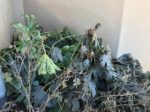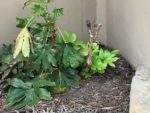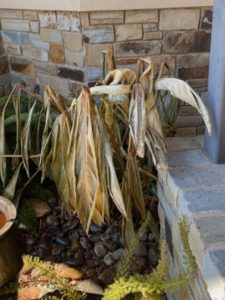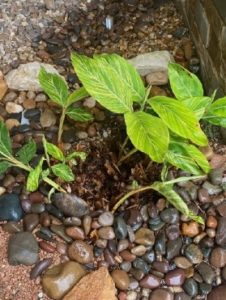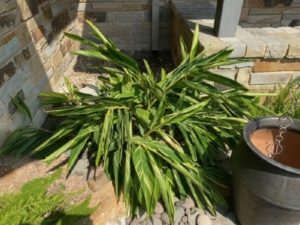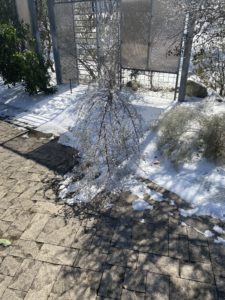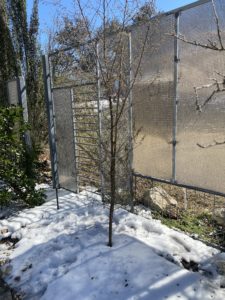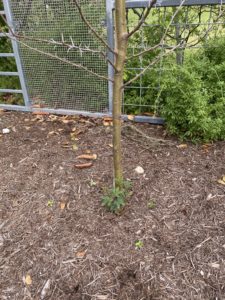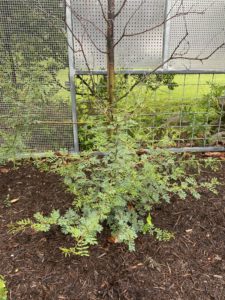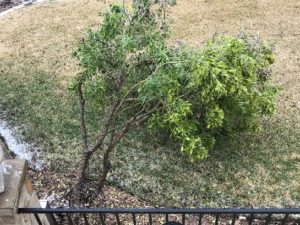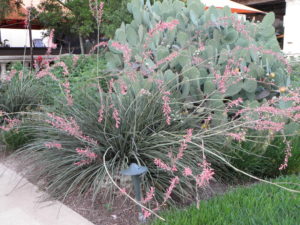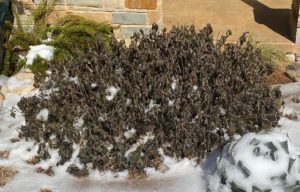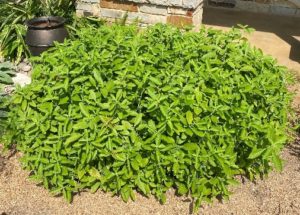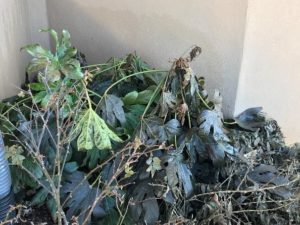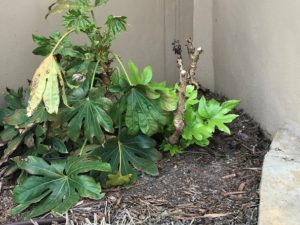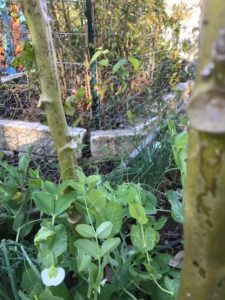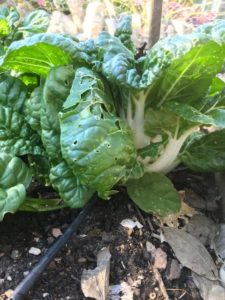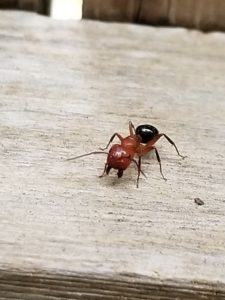
Overwinter Plants During Austin’s Crazy February Storms
We have all read the books and articles on how to overwinter plants in the house. We read that we should start getting them used to less light, less water, less fertilizer, and less attention.
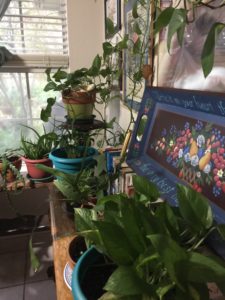
Overwintering plants inside can make for a crowded house!
We read that we should check for diseases, insects or even slithering critters, before making the transition from outside to inside. It all makes for good common sense, especially for those of us with a geranium or two, a Sansevieria that lives under the trees all summer, or a single Euphorbia trigona that thrives on our covered porch but shivers when November comes around. No problem!
How Do Master Gardeners Solve the Problem?
This past week we had our monthly Travis County Master Gardeners Association meeting. We do them virtually but start out in Zoom breakout rooms so that we can chat with each other. Since all the weather predictions were warning of Austin’s annual round of February cold snaps, we agreed that all those “helpful” articles do not go far enough for most of us.
We started out commenting on the current cold snap and how we had blanketed some of our shrubs and flower beds. It did not take long until we were talking about the plants we store inside every winter.
Solution: Move Plants to Living Spaces

The dining room table is the perfect (?) place to overwinter plants when a cold snap is predicted.
One person confessed that there is not a bit of room left in their garage because it is filled with plants. Another said they have not seen their dining room table since October and still another said that they have some many plants stacked up in their bedroom window, they can no longer reach the blinds without one of the long “grabber” sticks. Other seconded that statement.
Someone said they had to move out a couch to make room for plants. A few others talked about the huge Plumeria trees that were occupying most of their kitchen or living room. Some of us shared about how they’d displaced so much furniture to make room for 100s/1000s of seeds they’ve started under grow lights and on heating mats in one room or another. A couple of us even took our computers or phones into other rooms so that we could all see their overwintering clusters of lovely plant life. It was hilarious! It was heart-warming!
Discovering a Superpower During Power Outages?
It felt so good to realize that not one of us was the only crazy plant-obsessed person on earth, – the person who all those “Garden Humor” memes are written about. What a relief! Nothing wrong with getting really-really creative to accommodate and protect our horticultural treasures while the cool weather passed over. Maybe wintering over our plant buddies is our Superpower!
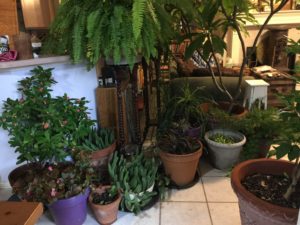
Welcome friends!
In the interest of full-disclosure I must confess that my home looks like a jungle each and every winter. In some spaces, I have to duck and dodge just to make my way from one room to another. Mostly I don’t mind as I feel like I am surrounded by old friends. How about you and your space?
Additional Resources
Weather Strategies for Austin Gardens
Frost and Freezing Temperatures and Ways to Protect Plants – Michigan State University Extension
Monthly Gardening Calendar for Austin
About Marge Trachtenberg

Marge has been a Travis County Master Gardener since 2008. She is a former executive in global operations and sustainability, but now concentrates her efforts on gardening. Marge has expertise in community gardens, native plants, pollinators, and vegetable gardens. She gardens organically and enjoys helping others discover their love of plants.
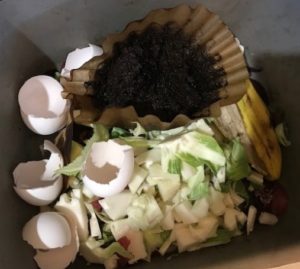
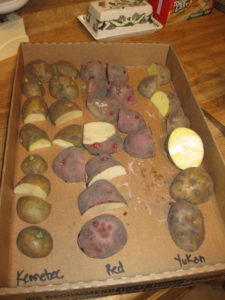
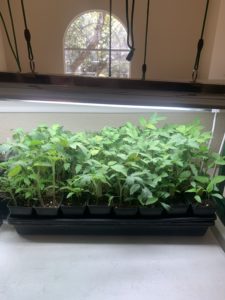
 Sheryl Williams has been a Travis County Master Gardener since 2010 and currently works as the Horticulture Program Assistant at Texas A&M AgriLife Extension – Travis County. She was introduced to gardening by her mom and grandma and has been an avid vegetable gardener most of her life. Sheryl believes that there is nothing more satisfying than growing and preparing your own food. She likes gardening in Austin year round and concedes that means pulling weeds every day. She practices organic gardening principles and enjoys the challenge of outsmarting garden pests. Occasionally she loses these battles, but doesn’t mind sharing a good meal.
Sheryl Williams has been a Travis County Master Gardener since 2010 and currently works as the Horticulture Program Assistant at Texas A&M AgriLife Extension – Travis County. She was introduced to gardening by her mom and grandma and has been an avid vegetable gardener most of her life. Sheryl believes that there is nothing more satisfying than growing and preparing your own food. She likes gardening in Austin year round and concedes that means pulling weeds every day. She practices organic gardening principles and enjoys the challenge of outsmarting garden pests. Occasionally she loses these battles, but doesn’t mind sharing a good meal.
